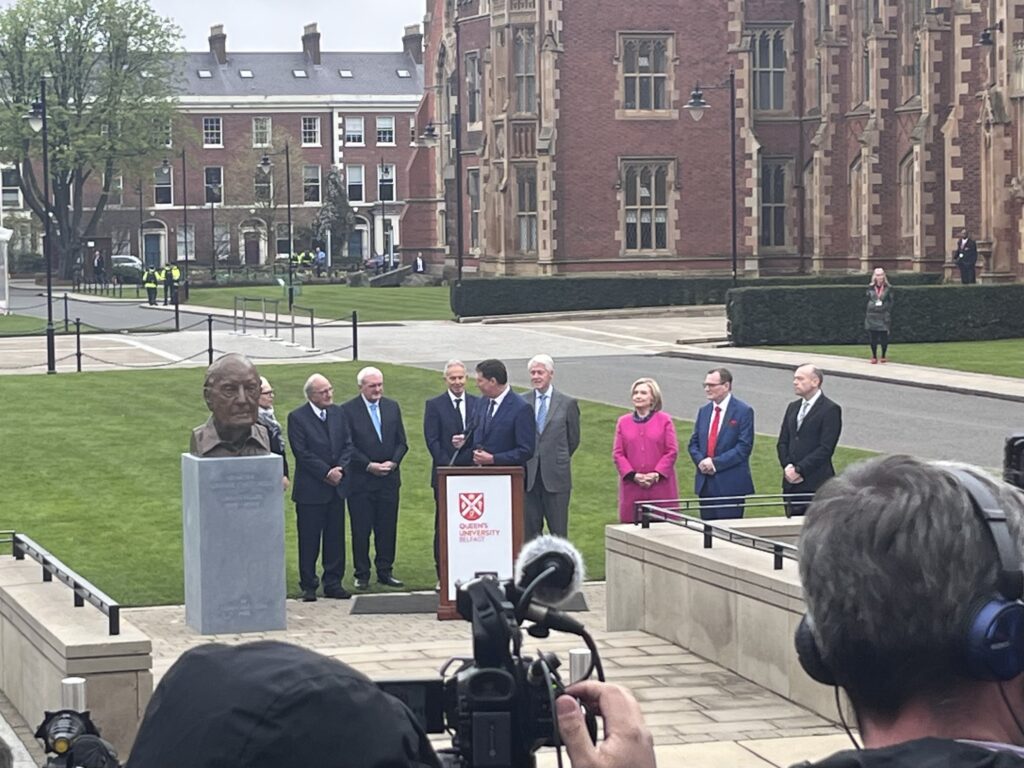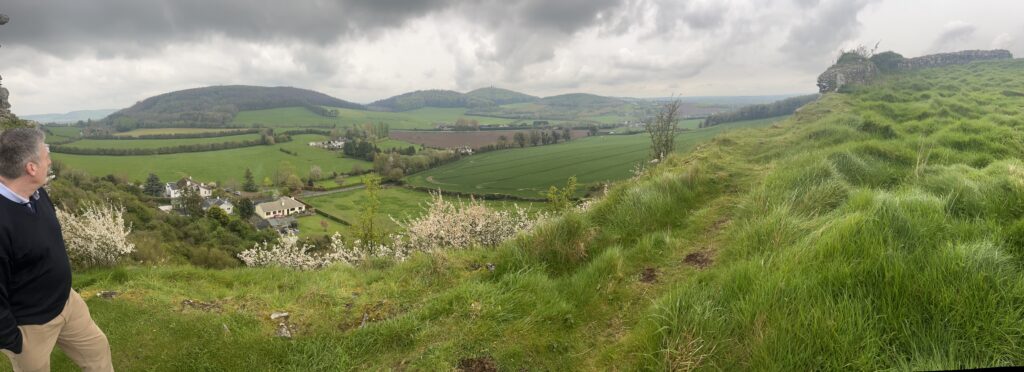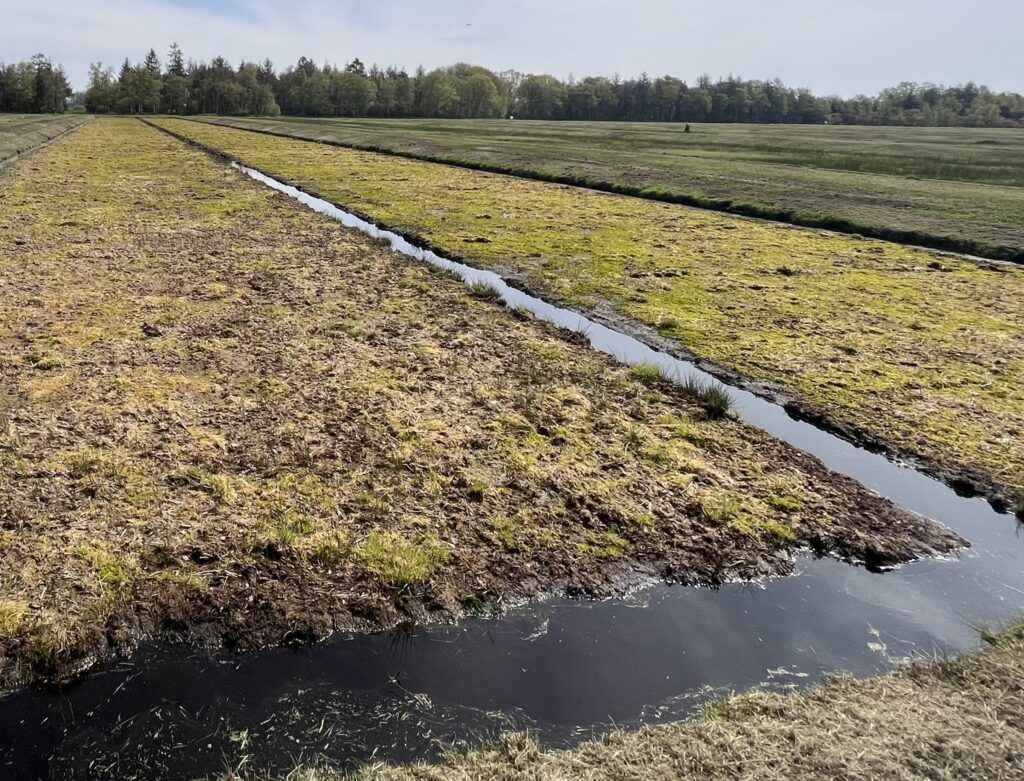I have a hunch George Mitchell might agree that second to the difficulty of reaching the Good Friday Agreement, now and resolving a defunct Stormount, is enacting a win-win solution for peatland rewetting in Ireland. Rewetting is, somehow, one of the most political issues in both countries. Thanks to being at UCD through the Mitchell I’ve now found myself under a Horizon Europe project in Ireland, where it’s now up to the intern to try handle that. So, here’s a record of what is turning into a new journey.

If you were exposed to news in the past two weeks in Ireland, then you probably heard farmers concerned with flooding from adjacent rewetting. This was spurred from debate on voting for the EU Nature Restoration law and goals to rewet, which as-introduced, unexpectedly failed to pass the first vote due to rural community and industry concerns across Europe. Scientific advisement for peatland provisions of the Nature Restoration Law, before the version voted on was introduced, was given in Brussels by colleagues of the UCD WaterLANDS project where I now work. This project is pursuing peatland solutions that work for carbon storage, wilderness, and also people. What we know which is not common knowledge yet in Ireland, is that a non-traditional approach to rewetting exsists intended to simultaeneoulsy benefit rural industry and reduce flood risk…
From the outside I’m jumping into a situation that seems like a loss for many, to refigure it as a win-win. Peatlands are an efficient carbon sink if rewetted, where globally they store more carbon than all forests despite covering just 3% of lands. This places peatland rewetting on the front line of fighting climate change. But in Northern Europe, due to draining they’ve not only stopped acting as a carbon sink but are an emission source. In Ireland after being drained decades ago to allow farming, or turf harvest for peat or horticulture, adjacent farms are now experiencing seepage or flooding for the first time in ages from the current rewetting under Bord na Mona’s restoration efforts. This is reportedly affecting crops, and comes after declines in the private horticulture turf industry, and ban of Bord na Mona turf cutting since 2018. Bord na Mona schemes even paid tuition for Irish students from rural communities who worked the bogs, now another lost benefit.

Rewetting is discussed in households across the country as a win-lose or lose-lose situation. If there’s no rewetting, emissions will not be stopped and ecosystem degradation will continue too. If there is rewetting as usual, rural livelihoods are feeling threatened from flooding and still no alternative has been proposed after loss of industry. It’s as if someone must have a problem under the others “solution”. Meanwhile reasonable conservationists would not want farmers to go uncompensated if impacted, and a number of farmers and horticulture industry recognize the climate impacts of drained land but simply do not have an accessible alternative yet.
There’s an apocryphal memory I have, from a slam-poetry session in Danville, Kentucky seven years ago. A mechanic and farmer who was the son of a coal mining family in Appalachia was at the microphone. Loosely rhyming, trailing off at times, he was telling two stories simultaneously- his childhood growing up on a mountain and valley surrounded by nature, and being a father raising his daughter in the same area. When he converged the storylines, the man started to break down but still continued. To send his daughter to college he sold the mountaintop of his childhood to the coal company. He watched her drive off, and he later watched as trees were felled and the mountaintop of his childhood exploded for surface mining. The hope for the future was that his daughter might not ever have to make that choice, after having an education he could not afford. She wanted to study sustainability, and find new purposes for making degraded land regenerative and productive – changing a problem into an opportunity.
Counter to instinct, sometimes within the source of the “problem” inherited there may be a win-win solution. In this case – that would entail a solution where a completely different approach to rewetting could rejuvenate the rural horticulture industry, peatland employment, allow carbon sink restoration, and reduce flood risk. That missing solution exists for Ireland, and is Sphagnum moss farming. It’s one new form of farming on wet peatland, which Ireland is permitted under EU regulation to enact and expand. Taking a crack at the design of the policy support package for it, and attempting to present that to stakeholders and government, has somehow become my work. Sphagum farming has existed in Europe since the 1990’s after various international developments, even in Wisconsin as early as the 1800’s. With win-win solutions in mind after the Agreement 25 conference, I hopped over to Bremen, Germany. The next day I met with stakeholders who created world’s first Sphagnum farm, and largest one in Rastede. They gave key insights for an ideal approach to introduce Sphagnum farming in Ireland and supports needed, including as a peat substitute in the horticulture industry.



Touring a 20 acre German Sphagnum site w developers and a Finnish horticulture business rep.
After gaining insights I was tentatively offered a job in Galway, so now I’m trusting the process that will happen and plan to stay another year. Hopefully, if the process prevails, if phones are answered, Ireland can realize there’s something in this for everyone. Hopefully, it might grow as an example to follow back in the U.S.
